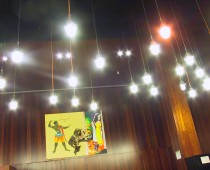The classic post by Paul Graham, “How to Get Startup Ideas“, is one I teach in my class at Columbia class on startups, and stands for one of the schools of thought on good ideas: bottom-up.
The other one is top-down, and it’s quite amazing how much wisdom Graham casually tosses in alongside his method, without ever really addressing the other way (he calls it “riding the wave” vs. “being the wave”, kinda.)
His view is “know something interesting” because you are interesting, or at least astutely figure out what makes you interesting. You could become interesting of course – like study genetics or computer science or hang out at the cutting edge is happening, get into Stanford, be the coffee runner at Tesla, whatever. Or you could notice that you are unique (and therefore interesting) because you are young or living through Covid or living some weird place far from the conventional wisdom of New York or Palo Alto.
This view is pretty similar to Peter Thiel’s about having a contrarian and distinctive view rooted in your identity and experience.
It’s where Aikito comes from — location finance platform for companies leasing commercial real estate. I spent five years running Knotel, spending up-front capital to make soon-to-be-profitable locations, often with customers in-hand. Why wasn’t there someone who would finance those revenue streams linked to physical locations? There are lots of peculiarities of real estate-linked costs and revenue that make it hard for banks to do. But there are lots of companies like Knotel out there — they run medical offices, retail chains, restaurants and food courts, hotels and short-term rentals, flexible offices and coworking, dark hubs for logistics, renewable energy sites, and more. So: Aikito. “Make what you know.”
The other school, which I think is often (in my circle) associated with Oli Samwer and Rocket Internet, but also with Fabrice Grinda and Jose Marin and others, is an equally interesting one: when you find a business with a model that works, you can vary it’s configurations to find more businesses. Change countries, change the customer segment, change the price tier, change the particular product itself, and so forth.
For my work this last year, CornerUP is an example that’s much closer to this. Many US players have been building instant commerce facing consumers, but some developing world players have been building business-to-business platforms, so small business owners can source and stock their merchandise more easily. In fact, there was only very impressive player in the US kind of like this — Faire — and virtually nothing else in the US. So we thought: let’s zoom in on the very local b2b marketplace area. The model makes sense, the US is different but has similar-enough dynamics, let’s figure out how to make it work.
Some start top-down, some bottom-up.
To make Aikito work, though, we had to go zoom out and learn how the top-down fintech world operates, and as we figured it out, now Aikito feels like a “b2b fintech for proptech players”. Something you could dream up by crossing PIPE/Capchase/receivables-financing/BNPL with Knotel/WeWork/Industrious.
And to make CornerUP we had to go learn the corner store business, talk to folks, hang out with them, sell to them, hire them in, eat lots of chips, etc.
The duality of this approach is very much behind Life Extension Ventures, which starts with the top-down observation — noticing “a wave” — and is now starting to deal with individual companies, founders, and ideas as we figure out which of their models could work on narrow problems and can be generalized into big, huge companies.
